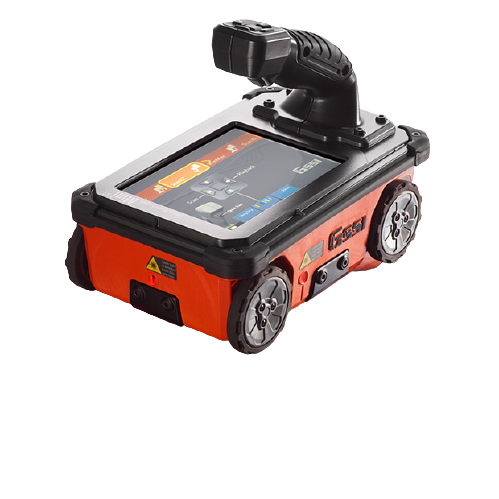RainierGPR Service Areas: Trusted Concrete Scanning Providers in Several Areas
Concrete Scanning: An Essential Step In The Direction Of Making Certain Architectural Integrity and Security
In the realm of construction and facilities maintenance, the relevance of concrete scanning can not be overstated. By employing advanced innovation and methodologies, concrete scanning offers as an essential tool in making sure that the integrity and safety of bridges and structures are promoted to the greatest criteria.
Relevance of Concrete Scanning
Concrete scanning plays an essential duty in ensuring the structural honesty and safety of structures and framework tasks. By using advanced innovations such as ground-penetrating radar (GPR) and electro-magnetic induction, experts can non-destructively evaluate concrete structures to spot possible issues, voids, embedded things, and support layout. This process enables early discovery of abnormalities that could compromise the stability of a framework, preventing costly damages and making sure the safety and security of residents.
Prior to boring, cutting, or coring right into concrete, scanning assists identify the specific areas of rebar, post-tension cables, and various other embedded components, reducing the risk of unintentional hits that can lead to structural weaknesses. Additionally, concrete scanning help in quality control by validating the density of concrete covers and finding any type of discrepancies that might affect the total longevity of the structure.
Innovation for Concrete Inspection

Benefits of Early Detection
Timely detection of structural problems can considerably alleviate dangers and make certain the durability of construction projects. By identifying potential troubles early in the building and construction procedure, stakeholders can take aggressive procedures to attend to problems prior to they intensify into larger and more pricey troubles. Among the crucial benefits of early discovery is the avoidance of architectural failures, which can pose serious safety and security threats and bring about task delays and financial losses.
Furthermore, very early discovery enables for timely fixings and upkeep, which can aid extend the lifespan of the framework. By resolving problems quickly, building groups can stay clear of expensive repairs or also the need for premature substitute of architectural parts. This aggressive technique not only conserves money and time yet also boosts the general safety and security and resilience of the construction job.
Furthermore, very early detection can boost job planning and decision-making by offering stakeholders with beneficial insights right into the condition of the framework. Equipped with this details, project supervisors can make educated choices concerning building and construction products, timelines, and methods, resulting in a lot more effective and effective task outcomes.
Guaranteeing Architectural Stability
Ensuring the architectural stability of a building task is extremely important to its safety and durability. Architectural security describes the ability of a structure or framework to preserve its kind and feature under ecological problems and various tons. To attain this, extensive analysis and surveillance of the framework are crucial. Concrete scanning plays a critical duty in ensuring architectural stability by detecting potential issues such as voids, delamination, or reinforcement corrosion that can compromise the honesty of the framework with time.
By utilizing advanced scanning modern technologies like ground-penetrating radar (GPR) and electromagnetic induction, view publisher site construction experts can non-invasively inspect concrete frameworks to identify locations of worry beneath the surface. This aggressive technique enables the early discovery of problems or weaknesses, making it possible for timely repair work or support to stop structural failures.
Normal concrete scanning during various building and construction phases and throughout the life cycle of a framework can assist maintain its stability, mitigate threats, and make certain the security of occupants. By focusing on structural security with concrete scanning, construction jobs can enhance their durability and sturdiness, ultimately adding to higher safety and security and durability.
Protecting Against Vital Failures
Executing routine examinations, such as concrete scanning, can disclose surprise defects like voids, cracks, or corrosion that might endanger the honesty of a framework. By making use of innovative scanning modern technologies like Ground Passing through Radar (GPR) or Concrete X-ray, designers can non-destructively analyze the problem of concrete and recognize weak factors that need support or fixing.

Final Thought
Finally, concrete scanning plays a critical duty in making sure structural honesty and security by using advanced technology for early detection of prospective problems. This proactive technique assists avoid vital failings and guarantees the security of structures. It is crucial to focus on concrete evaluation as a conventional practice to protect the longevity and security of structures and infrastructure.
Concrete scanning plays an essential function in making certain the architectural honesty and safety of structures and framework tasks. Additionally, concrete scanning help in high quality control by validating the thickness of concrete covers and identifying any type of inconsistencies that may affect the general sturdiness of the continue reading this structure. Concrete scanning plays an Discover More Here important role in ensuring structural security by discovering possible problems such as voids, delamination, or support deterioration that might endanger the integrity of the structure over time.

In final thought, concrete scanning plays an important function in guaranteeing structural integrity and safety by utilizing innovative modern technology for very early detection of potential issues.